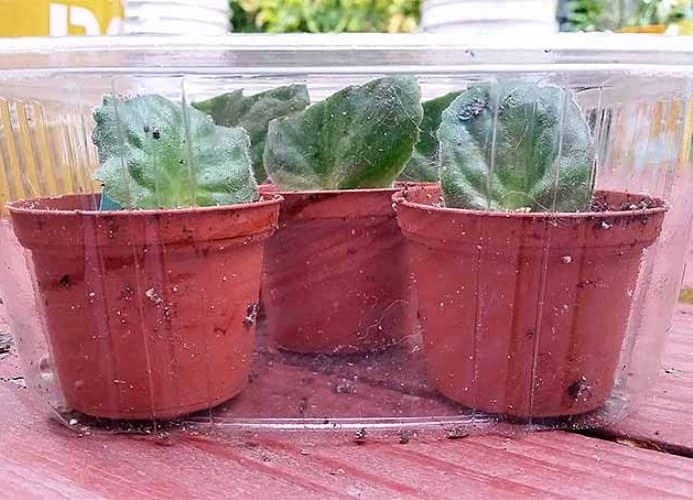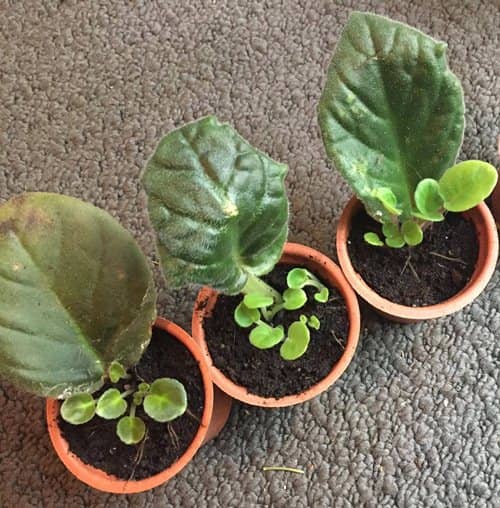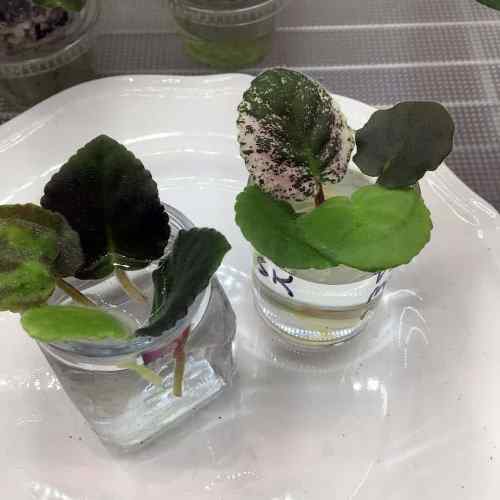Want to expand your collection of African Violets (Saintpaulia sp.) or give gifts to other plant lovers? Fortunately, African violets are easy and inexpensive plants to propagate. In this guide, you will learn how to easily propagate the African violet.

Contents
Propagate African Violet by Cuttings
There are two methods of propagation from cuttings. You can do this using potting soil or you can do this in water. Both methods are easy to follow and often result in a healthy new African violet.
Remember that the best times of the year to propagate African violets are in spring and summer. If you do it inside the house and the temperature averages 18 degrees Celsius, you can try it all year round.
Propagate African Violet on Earth
Step 1: Choose multiple leaves to propagate
Not all cuttings will give rise to a new African violet, so picking a few extra leaves is necessary. The best new African violets come from healthy leaves. Avoid leaves that have brown spots, holes, or curled edges.
Pluck the leaves from the center rows. The upper layers are not mature enough to create strong new plants and the lower leaves are past their prime.
Step 2: Cut the leaves you selected.

Once you know which leaves you want to use, use scissors or a knife to cut off the stem about 1 inch. Make the cut at a 45 degree angle so the stem has more surface area for the roots.
Some people choose to cut off the top half of each leaf to encourage the cutting to put more energy into creating new roots. This step is optional. You won’t see much difference in the time it takes for the leaf to root anyway.
Another optional step is to soak the cut stem in a rooting hormone. It can also encourage the cutting to root faster. It’s not absolutely necessary, but if you plan to do a lot of propagation, rooting hormones can be helpful. See: rooting
Step 3: Put the cuttings in pots.

Prepare the pots by filling them with a mixture of garden soil and a little sand. African violets need light soil that allows water to drain quickly.
Use your little finger to poke a hole in the floor of each container. Then place a rod on each of them. Bury it down to the base of the leaf, then gently press the soil around the stem to help the leaf straighten. Then, water little by little until all the soil is moist.
Step 4: Take care of the cut.

Cuttings propagate best in greenhouse conditions. Use a plastic bag or lid to cover the containers and keep them moist. Don’t let the leaves touch the plastic.
Place the cuttings in a window where they will receive indirect sunlight. Too much direct sunlight or heat will cause the leaves to scorch.
Check regularly that the cuttings are sufficiently moist. Do not allow containers to dry out completely.
Step 5: Transplant the cuttings.

You will see how tiny new plants begin to grow after about 8 weeks. These little plants will have a better chance of survival if you allow them to develop 3-4 leaves before you remove them from the cutting and repot them on their own.
New plants will appear to grow slowly at first, but be patient. In a few months, they will be more mature and ready to flower.
Propagate African Violet in Water

Many plant owners are used to propagating new plants in water. If you’re one of those plant lovers, the good news is that it’s very easy to propagate African violets this way.
Step 1: Prepare the jar or container.
Select a jar or container with a wide opening. Fill it with water and place plastic wrap over the opening. If necessary, fix the plastic film with adhesive tape.
Step 2: Choose a leaf to propagate.
Choose a healthy leaf with no spots or blemishes. The middle row leaves are best, as they are mature enough to produce a healthy new plant.
Cut the leaf from the plant. Next, cut the stem at a 45 degree angle, leaving about an inch of stem.
Step 3: place the cutting in the container.

Use an object like a pencil or a skewer to poke a hole in the plastic wrap. Place the cutting in the hole so that the stem touches the water.
Step 4: Take care of the cut.
Place the jar in a window with direct and indirect sunlight. Direct sunlight or excessive heat can burn the blade.
As these new plants develop, keep the temperature between 21 and 26 degrees Celsius during the day and between 18 and 21 degrees Celsius at night.
Change the water every 7-10 days, using room temperature water each time, much better if it rains.
If you leave the same water in the container for too long, bacteria and fungi can grow, so don’t forget to change it.
When you see roots starting to grow after a few weeks, you can add a small drop of liquid fertilizer to the water if you like, but it’s not a necessary step.
Step 5: Transplantation

An African violet cutting takes 3 to 4 weeks to form new roots. About 3-4 weeks later you will start to see new leaves. Once 2-3 new leaves have grown, it’s time to transplant.
African violets do well in small pots. You probably won’t have to move your small African violet to a larger container for a while.
When the plant seems to be running out of space in the first container, it’s time to transplant it into a slightly larger container.
It may also be interesting to read: 12 plants that are easy to propagate from a leaf
Water regularly and give your plant 10 hours of light per day. Small containers dry out faster than large ones, so you may need to water your new African violet a little more often.
Article to complete this reading:
Share this article on the networks: